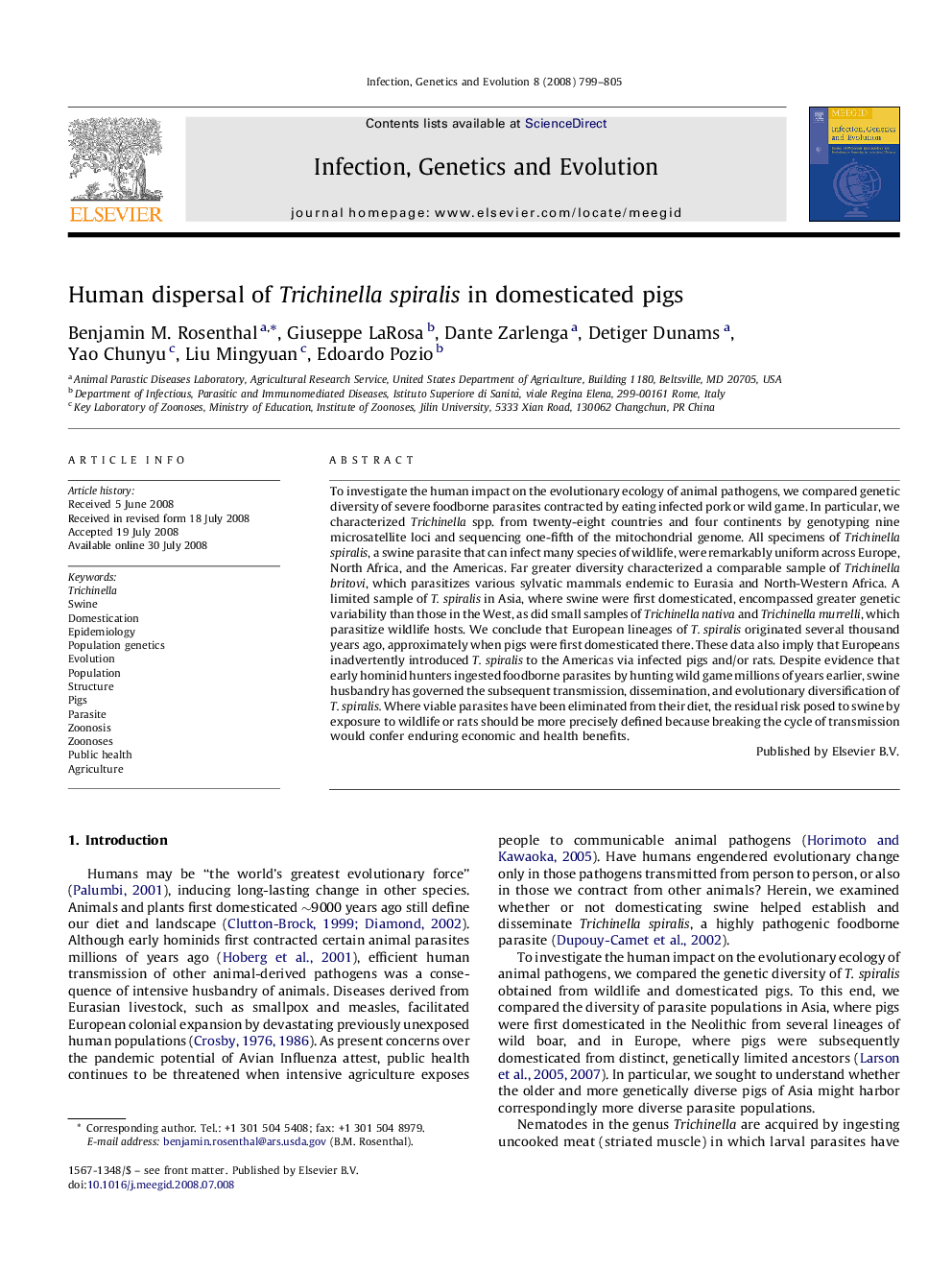| Article ID | Journal | Published Year | Pages | File Type |
|---|---|---|---|---|
| 2823439 | Infection, Genetics and Evolution | 2008 | 7 Pages |
To investigate the human impact on the evolutionary ecology of animal pathogens, we compared genetic diversity of severe foodborne parasites contracted by eating infected pork or wild game. In particular, we characterized Trichinella spp. from twenty-eight countries and four continents by genotyping nine microsatellite loci and sequencing one-fifth of the mitochondrial genome. All specimens of Trichinella spiralis, a swine parasite that can infect many species of wildlife, were remarkably uniform across Europe, North Africa, and the Americas. Far greater diversity characterized a comparable sample of Trichinella britovi, which parasitizes various sylvatic mammals endemic to Eurasia and North-Western Africa. A limited sample of T. spiralis in Asia, where swine were first domesticated, encompassed greater genetic variability than those in the West, as did small samples of Trichinella nativa and Trichinella murrelli, which parasitize wildlife hosts. We conclude that European lineages of T. spiralis originated several thousand years ago, approximately when pigs were first domesticated there. These data also imply that Europeans inadvertently introduced T. spiralis to the Americas via infected pigs and/or rats. Despite evidence that early hominid hunters ingested foodborne parasites by hunting wild game millions of years earlier, swine husbandry has governed the subsequent transmission, dissemination, and evolutionary diversification of T. spiralis. Where viable parasites have been eliminated from their diet, the residual risk posed to swine by exposure to wildlife or rats should be more precisely defined because breaking the cycle of transmission would confer enduring economic and health benefits.
